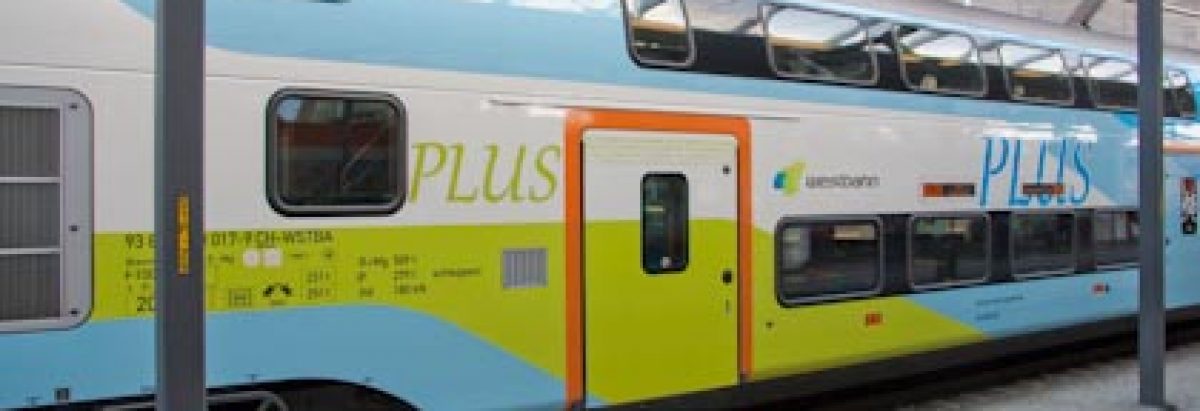History
The Eastern New England Chapter of European Train Enthusiasts ETE) was chartered in June of 2000. However, the origins of the chapter and ETE in New England actually go back three years earlier, to the founding of the now-defunct New England Chapter in early 1997. Those members of the New England Chapter who were actively interested in European model railroading founded a Module Special Interest Group, or Mod SIG, within the New England Chapter. During the three years from mid-1997 to mid-2000, the Mod SIG became increasingly autonomous, eventually having its own officers, by-laws, treasury, and programs.
In June of 2000, after three years of intensive growth and independent activity, the twelve members of the Mod SIG, led by the late Barry Kriegsman, petitioned the ETE national board of directors to charter the group as a wholly autonomous Eastern New England Chapter. Seven members of the group traveled to San Francisco to attend EuroWest and accept our new chapter’s charter, which was presented on June 10th, 2000 at the national board of director’s annual meeting. Since that time, the Eastern New England Chapter has grown to more than fifty members.
Governance and Structure
Although we had originally considered having a full slate of officers and board of directors, the general consensus among our founding members was that less government is better. For the first three and a half years, we got along nicely with just three officers, each of whom wore two or more hats. Barry Kriegsman, our chapter’s founder, served as both chapter chairman and show manager, and supervised the construction, transportation, and storage of our show modules. Royce Thomas, our treasurer and membership secretary, was the tallest guy in the chapter, so we felt that our chapter funds were in safe hands with him. David Green was our chapter’s corresponding secretary and program chairman, and also served as our webmaster and technical guru-in-residence. More recently, a decision was made to spread the responsibilities out among more chapter members, in order to involve more members in the decision-making process and ease the workload on our founding officers. A list of our current officers and their chapter E-mail boxes is on the Contact Us page.
Members
Our chapter has the most extremely diverse group of individuals that one could possibly imagine. We come from all walks of life and myriad different professions. We all have very different personalities, skills, and abilities, as well as different areas of interest within our hobby. What we share in common is our love of European trains and our commitment to excellence in the European model train hobby. Although, as our chapter name implies, the majority of our original members live in eastern New England, mostly in eastern Massachusetts, we actually now have members from all over New England and beyond. Some dedicated members regularly drive two to three hours or more to attend our monthly meetings. Others live too far away to attend meetings regularly, but join our chapter because they receive a wealth of useful information from our E-mail list. We typically rotate meeting locations among the homes of various members. This not only equalizes the driving, but provides us with a change of scenery and allows us to see the home layouts of our hosts, whether fully completed or still under construction. Needless to say, our hosts also see that we are amply provided with food and drink, from the traditional coffee and donuts while we gather, to a lavish sit-down lunch. Our business meetings are mercifully short to non-existent; we usually just discuss on-going issues informally over lunch.
Programs
One of the great advantages of membership in the ETE national organization is that each chapter is wholly free to pursue its own interests and activities, develop its own structure and programs, and govern itself as it sees fit. Our Eastern New England Chapter, which in three short years has become one of the larger chapters in the United States, has grown and prospered because of the hard work and dedication of our members. Our philosophy and programs reflect a strong commitment to public service and education, both of our own members and of the general public. At our monthly chapter meetings, we not only socialize and talk about trains, but share information and experiences and learn from each other about European railroading and the European model railroad hobby. To that end, each meeting has at least one and usually two educational presentations. Perhaps a lecture, slide show, demonstration, tutorial, or seminar, about some aspect of European model railroading is given by a chapter member or guest with special expertise in that area.
In November of 2002, chapter members brought their laptop computers to a meeting at the home of Bob Forte where David Green led a seminar in writing programs for Jürgen Freiwald’s excellent but complex train control program Railroad and Co. This is the computer program that we use to operate trains on our modular layout at area train shows, and a number of members are now using it to operate their home layouts as well. Most of our members would agree that the learning curve for this program is quite steep, but the results are definitely worth the effort. This tutorial is typical of the many educational benefits that the Eastern New England Chapter offers to its members on an on-going basis.
We also have hands-on workshop sessions, where our members can learn and apply the model railroading skills, such as layout design, bench work construction, roadbed and track layout, catenary installation, wiring, and landscaping, taught by our more experienced chapter members. We encourage and actively support newcomers in the hobby by helping them acquire the knowledge and learn the techniques and skills that will enable them to build and operate their own home European model railroad layouts.

